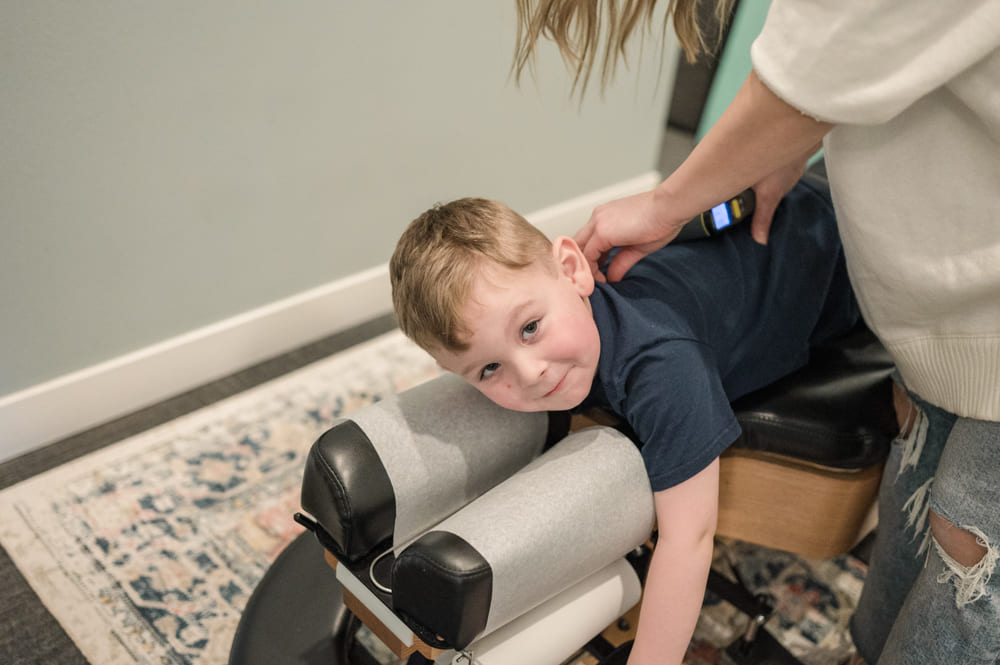Unraveling The Mysteries Of Nervous System Dysregulation
The Nervous System And Its Significance
The human body is a marvel of complexity, with each system playing a crucial role in maintaining overall health, functionality, and performance. At the core of this intricate web lies the nervous system, an absolutely incredible network responsible for transmitting signals between different parts of the body, allowing for coordinated movement, sensory perception, and advanced cognitive processes.
The nervous system’s significance cannot be overstated, as it is essentially the body’s communication superhighway, enabling us to interact with our environment (both internal and external) and respond to various stimuli.
In this article, we will dive deep into the realm of nervous system dysregulation, a condition that disrupts the delicate balance and harmonious functioning of this vital system. We will explore the various facets of this condition, from its definition and underlying causes to its symptoms, associated disorders, treatment and care strategies, and the importance of early detection.
Understanding Nervous System Dysregulation
Definition And Basic Concepts
Nervous system dysregulation refers to a malfunction or imbalance within the nervous system, which affects its normal functioning and capacity to regulate responses to stimuli. This can manifest in various ways, ranging from physiological to emotional and cognitive disturbances.
When we break it down to everyday life, this means that nervous system dysregulation is often the overlooked and underlying factor as to why so many adults and kids alike are sensitive to even mild or moderate stressors, triggering everything from neck pain and headaches (physical), to sleep disorders and gut issues (physiological), and even behavioral and emotional challenges (cognitive).
In essence, when the nervous system is dysregulated, it struggles to maintain or return to a state of equilibrium or homeostasis after responding to external or internal stimuli. Such dysregulation can result from a variety of factors, including birth trauma, physical injuries, chronic stress, toxins, or long-standing inflammation. Symptoms can vary widely and may include sensory challenges, sleep disturbances, mood disorders, chronic pain, gut and immune dysfunctions, and so much more.
The Difference Between Dysregulation And Disease
It’s important to note that nervous system dysregulation is distinct from a full-fledged disease. While a disease typically involves a clear pathological process with recognizable symptoms and established medical criteria, dysregulation involves a disruption of normal functioning without necessarily reaching the level of a diagnosable disease. However, untreated dysregulation can potentially lead to the development of more serious disorders over time.
The early trigger and progressive onset of nervous system dysregulation is the foundation of our “Perfect Storm” theory and concepts, starting with things like a high-stress pregnancy, birth interventions and trauma, and so forth. We will break this down further in the next section and, introduce important and related elements such as subluxation and dysautonomia, and discuss their role in creating a dysregulated nervous system in both kids and adults.
The Underlying Causes
Preconception And Prenatal Distress
Since the brain and nervous system are the very first things to form upon conception and during the embryonic stage of development, research continues to show us that mothers and families who experience high levels of stress and trauma during this crucial period of development are at a higher risk of seeing their offspring develop nervous system dysregulation and neurological disorders as well. If you’re currently pregnant or know someone who is, learn more about how to help better regulate your nervous system and adapt to stress here.
Impact Of Birth Trauma And Injuries
The journey of nervous system dysregulation can not only begin even before birth, as mentioned above, but birth itself can be quite traumatic for the infant’s nervous system. Traumatic birth experiences or injuries during labor and delivery can set the stage for dysregulation to develop later in life. These early traumas can create imbalances within the nervous system that persist and potentially contribute to a range of neurodevelopmental challenges later in life.
Environmental Triggers And Stressors
Our modern lifestyle is rife with stressors that can impact the delicate balance of the nervous system. Chronic stress, exposure to environmental toxins, and the demands of our fast-paced lives can all contribute to nervous system dysregulation. The body’s response to stress, often referred to as the “fight or flight” response, is a natural survival mechanism. However, chronic activation of this response can lead to dysregulation, affecting various bodily systems.
Other Contributing Factors: Lifestyle And Habits
Lifestyle choices play a significant role in the health of the nervous system. Poor dietary habits, lack of physical activity, inadequate sleep, and substance abuse can all contribute to dysregulation. Additionally, the growing reliance on technology and prolonged screen time can impact the nervous system’s ability to regulate itself effectively.
Major Types Of Nervous System Dysregulation
There are different types of nervous system dysregulation, each affecting different aspects of the nervous system’s functionality:
- Central Nervous System Dysregulation: This type involves imbalances within the brain and spinal cord, affecting cognitive processes, emotions, and sensory perception.
- Peripheral Nervous System Dysregulation: Peripheral nerves connect the central nervous system to the rest of the body. Dysregulation in this area can lead to pain, tingling, and numbness in various body parts.
- Autonomic Nervous System Dysregulation: The autonomic nervous system controls involuntary bodily functions like heart rate, digestion, immune function, breathing, and so much more. This form of dysregulation leads to a neurological condition known as dysautonomia, which can have a large array of symptoms and related health challenges.
Recognizing The Symptoms
Physical Manifestations
The physical symptoms of nervous system dysregulation can be wide-ranging. These may include chronic pain, muscle tension, headaches, digestive problems, and a weakened immune system. Individuals with dysregulation might experience persistent discomfort without clear medical explanations.
Cognitive And Emotional Signs
Cognitive and emotional manifestations can be equally challenging. Memory problems, difficulty concentrating, mood swings, and heightened sensitivity to stimuli are common. Anxiety, depression, and irritability may also emerge as the nervous system struggles to regulate emotions effectively.
Behavioral Changes
Nervous system dysregulation can influence behavior as well. Individuals might exhibit changes in sleep patterns, appetite, and stress-coping mechanisms. Some may withdraw from social interactions due to heightened sensitivity to sensory stimuli.
The Link Between Dysregulation And Other Disorders
Sensory And Autism Spectrum Disorders
Perhaps the most clear and obvious example of nervous system dysregulation in kids can be found in two conditions that, unfortunately, are exploding in this current generation: sensory processing disorder and autism spectrum disorder. Additionally, there is a strong link between a dysregulated nervous system and other common conditions such as ADHD and anxiety, as well as less commonly known conditions like POTS Syndrome and PANDAS.
Anxiety And Mood Disorders
According to the World Health Organization (WHO), anxiety disorders affect around 264 million people globally. Nervous system dysregulation can contribute to the development or exacerbation of anxiety disorders. The brain’s heightened state of alertness and the body’s overactive sympathetic stress response are potential contributors to this link.
Sleep Disturbances
Sleep is crucial for overall well-being, but dysregulation can interfere with the body’s ability to enter restorative sleep states. Individuals might struggle to fall asleep, stay asleep, or experience restful sleep, leading to a cascade of negative health effects. You can find help with natural sleep solutions here.
Constipation And Gut Issues
The autonomic nervous system plays a role in regulating gastrointestinal functions, including digestion and bowel movements. Dysregulation can disrupt these processes, leading to issues like constipation and irritable bowel syndrome. Additionally, a dysregulated nervous system cannot properly digest and absorb nutrients, leading to problems with the gut-brain connection, microbiome, serotonin and dopamine production, and so much more.
Respiratory And Immune System Challenges
Like nearly every other core function of the body, the respiratory and immune systems both rely on the nervous system to modulate and coordinate their activities. Therefore a dysregulated central or autonomic nervous system can lead to imbalance and dysfunction within these systems, leading to a suppressed immune system and pro-inflammatory state. All of this can add up to a repetitive cycle of chronic ear infections, sinus congestion, and more. Recent research has even linked a dysregulated nervous system to seasonal allergies.
Treatment And Management Strategies
Therapies: Physical, Occupational, And Psychotherapy
Various therapeutic approaches can help individuals manage nervous system dysregulation. Physical therapy can address musculoskeletal imbalances that contribute to discomfort. Occupational therapy focuses on improving daily functioning and quality of life. Psychotherapy, particularly approaches like cognitive-behavioral therapy (CbT), can aid in managing the emotional and cognitive aspects of dysregulation.
However, each of these various traditional treatment options often leads to limited results because they are only able to address one component of the intricate challenges that kids and adults struggling with nervous system dysregulation are likely experiencing.
This is why most of the patients presenting to our clinic have already exhausted each of these therapy options and have either plateaued or seen only minor results and improvements so far.
Neurologically-focused Chiropractic Care
Perhaps the fastest growing option in all of healthcare is the absolute perfect care option for nervous system dysregulation: Neurologically-Focused Chiropractic Care.
A holistic and drug-free approach to caring for nervous system dysregulation absolutely must include this specialized form of chiropractic care. This approach recognizes the intricate connection between the spine, nervous system, and overall health.
Our adjustments focus on restoring optimal function and balance to the nervous system, improving integration and communication between all branches of the nervous system, but most especially the central and autonomic nervous system.
One especially important element of this work is activating and restoring the function of the Vagus Nerve, which is by far and away the most important nerve in the body when it comes to the regulation and function of the nervous system.
The Importance Of Early Detection
Benefits Of Timely Diagnosis
Early detection of nervous system dysregulation offers several crucial advantages:
- Early Intervention:Initiating proper care protocols earlier can prevent the progression of the condition and may offer better outcomes in managing symptoms and challenges. So many sensory, spectrum, and other neurodevelopmental challenges in kids can be taken care of early when the first signs of nervous system dysregulation first show up (colic, difficulty breastfeeding, sleep challenges, constipation, respiratory problems, ear infections, meltdowns, tantrums, motor delays, etc.).
- Reduced Complications:Catching dysregulation early can minimize potential complications, such as the development of associated disorders or the worsening of symptoms.
- Improved Quality of Life:Early diagnosis and treatment can help individuals maintain a better quality of life by managing or reducing debilitating symptoms.
- better Mental Health Outcomes: Early detection can prevent or alleviate associated mental health challenges like anxiety or depression that often accompany chronic conditions.
- Informed Lifestyle Choices:With a timely diagnosis, individuals can make lifestyle modifications that support their nervous system’s health, such as regular chiropractic adjustments, dietary changes, exercise routines, meditation, and stress-reduction techniques.
- Enhanced Treatment Efficiency:Earlier diagnosis often means that less aggressive treatments can be effective, as the condition hasn’t had as much time to progress.
- Greater Understanding:Knowledge of the condition allows patients and their families to better understand what’s happening, leading to a more informed approach to daily living and management.
- Support System Access:With an early diagnosis, patients can sooner tap into support groups, therapies, and resources tailored to their condition.
Finding And Measuring Nervous System Dysregulation
Everything we’re talking about in these final sections of the article on how to properly manage and take care of nervous system dysregulation begins with one crucial step – getting you or your child into a PX Docs office to have your Neurological INSiGHT Scans performed.
These scans are absolutely life-changing in that they can do three (3) things that no other exam or assessment can even come close to:
- They can detect subluxation, dysautonomia, and nervous system dysregulation
- They can quantify and measure the amount (severity) of dysregulation
- They can locate and target the exact subluxation patterns disrupting neurological communication and dysfunction
You simply cannot provide actual Neurologically-Focused Chiropractic Care without relying on the INSiGHT Scans to be the foundation of the care provided. Having these scans and the “neuro-metrics” they provide, our PX Docs are what allows us to provide the most accurate, personalized, and customized care possible for each and every patient, from infants to adults.
Summary: Key Takeaways And Moving Forward
The nervous system plays an absolutely vital role in all of human health, starting with brain and neurological development in a child and continuing to show up in our everyday lives throughout adulthood. Its job is to literally process millions and millions of pieces of crucial information every single second and make the right decisions over and over again.
Therefore, when nervous system dysregulation sets in, our quality of life can deteriorate rapidly. What’s more, because most medical professionals have little to no understanding of how to actually measure, track, and improve neurological function and health, most patients suffering from a dysregulated nervous system end up struggling for years before finally finding answers and natural, drug-free solutions like those that the Neurologically-Focused Chiropractors in our PX Docs Network offer.
Our unique approach does not seek to treat or cure nervous system dysregulation but instead takes the root cause of subluxation, dysautonomia, and vagus nerve dysfunction head-on. Our patients experience incredible improvements in their quality of life once care begins, and neurological healing kicks into high gear!
The first reports of improvements come from things like improved sleep, less tension, better gut and immune health, improved mood and emotional stability, less brain fog, and so forth.
Discover the power of Neurologically-Focused Chiropractic Care yourself, and determine if you or your child are struggling with nervous system dysregulation, subluxation, and dysautonomia by visiting our directory and getting an appointment set with your local PX Doctor to have your INSiGHT Scans performed.
The first step to your drug-free healing journey is to get these incredible scans and find out exactly how your nervous system is functioning. Find a PX Doc near you and take the first step toward a healthier, more vibrant life for your entire family!











